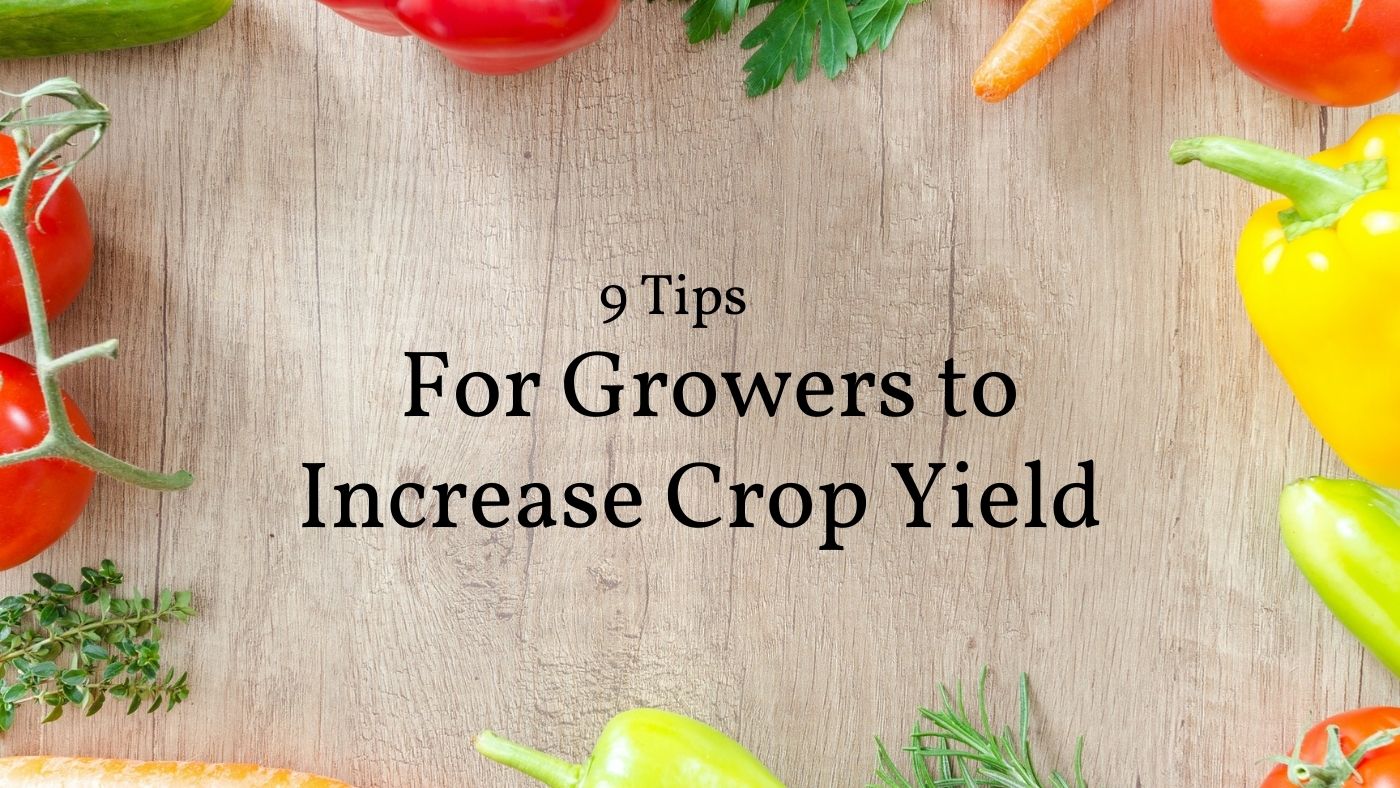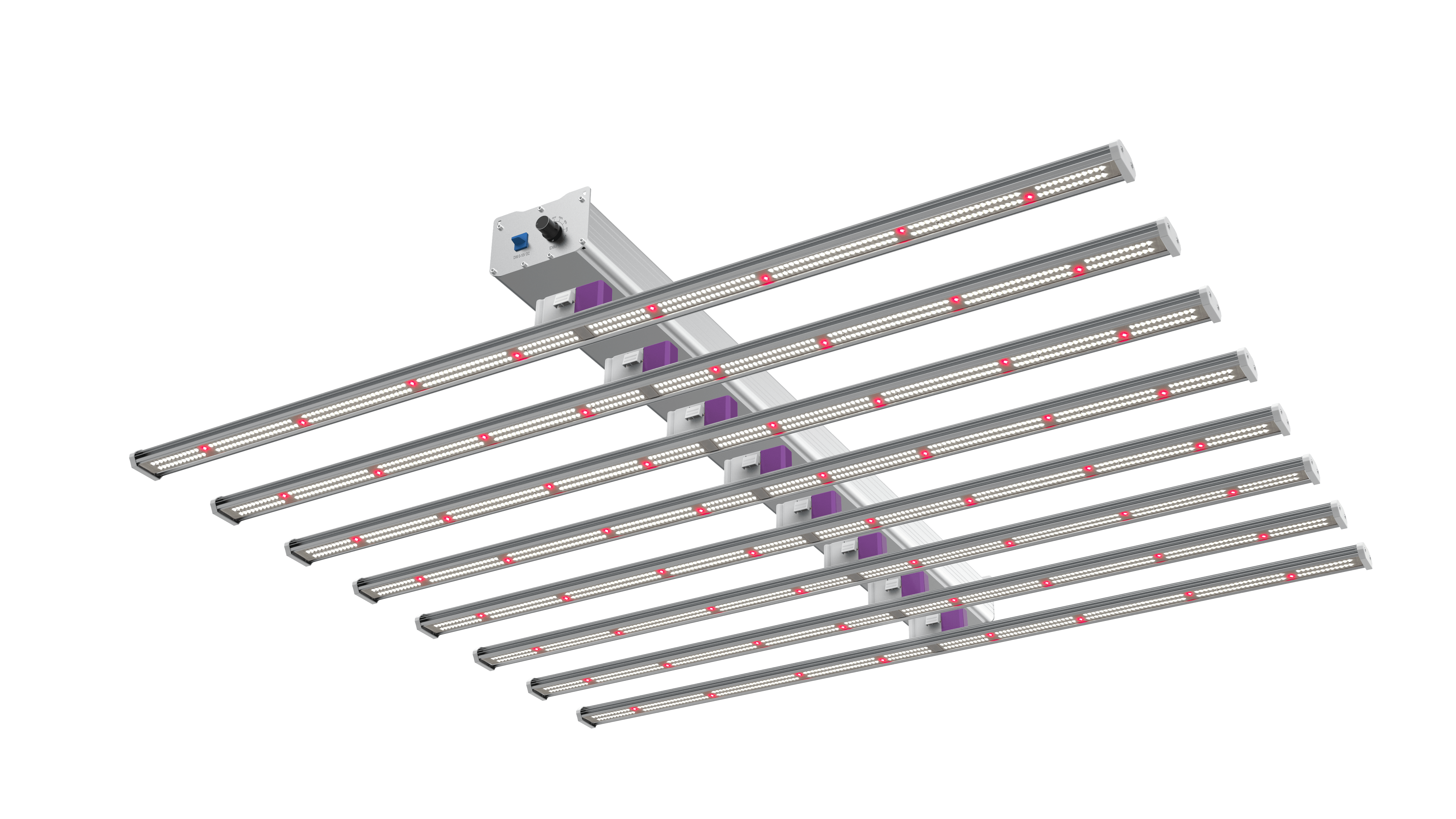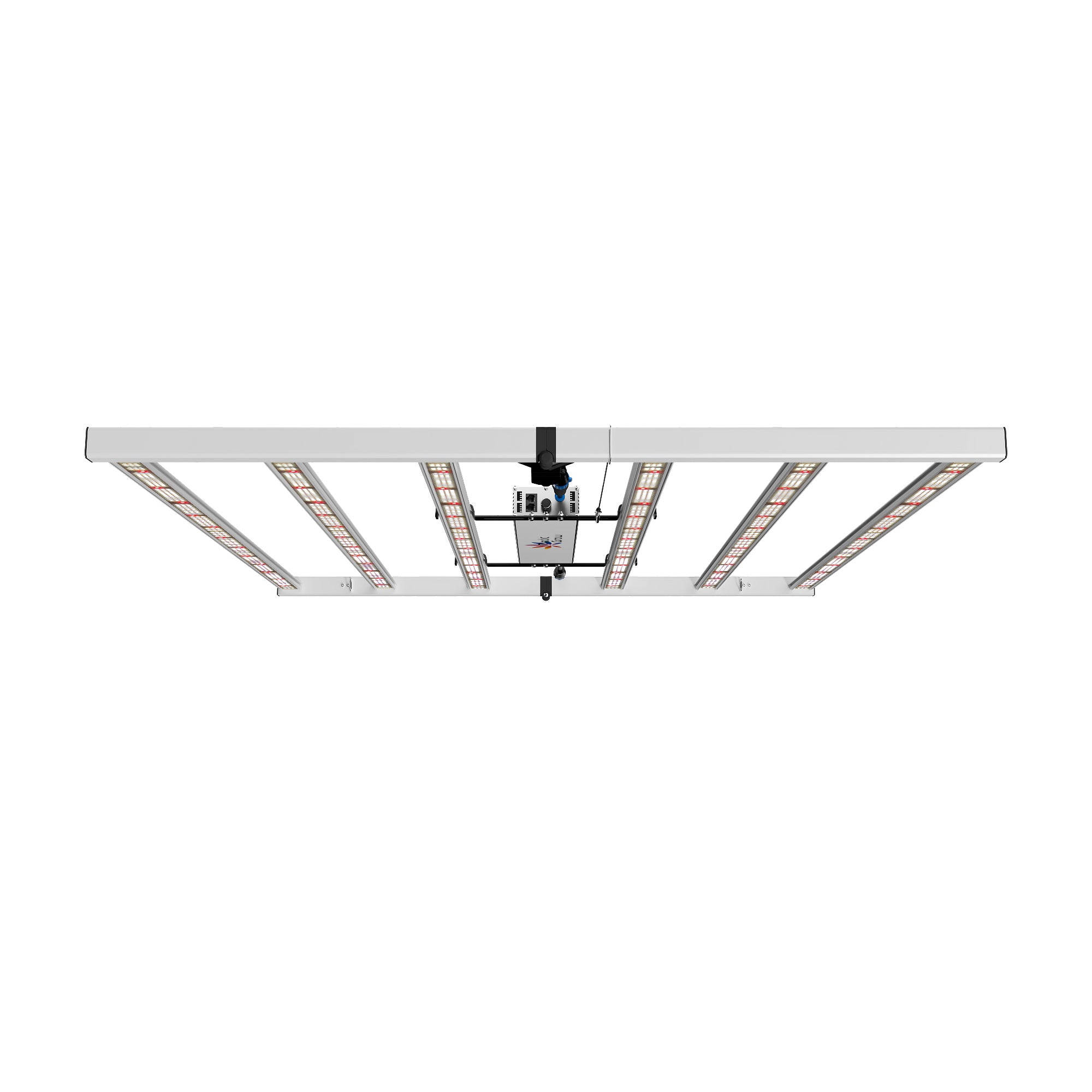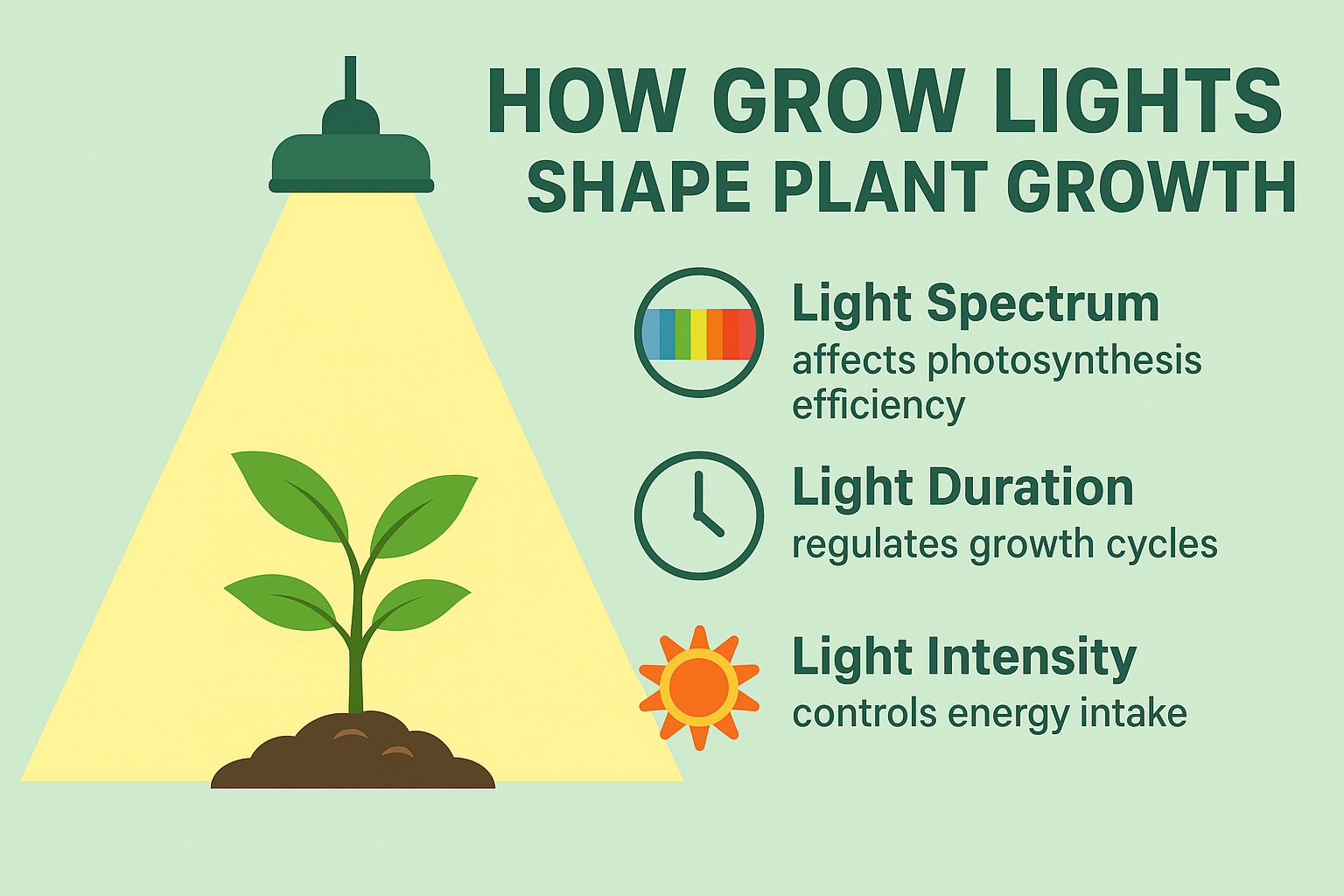
9 Tips for Growers to Increase Crop Yield
Crop yield is one of the factors that directly affect the supply of crops in an area (the same goes for horticulture growing with the help of indoor grow lights).
You've likely noticed that some vegetables cost less one year and in the next, the prices have shot up.
If the supply isn't adequate and the demand for crops is high, the prices will go up.
For growers, a high crop yield means more quantity, better-quality produce, and more profit.
In this article, we'll explore the causes of low-yielding, high-yield crops that you need to know about and the ultimate 9 tips for growers to increase crop yield.
- Part 1: What Is Crop Yield?
- Part 2: Main Causes of Low Yielding
- Part 3: High Yielding Crops You Should Know
- Part 4: 9 Ways Growers Can Increase Crop Yield
What Is Crop Yield?
In simple terms, crop yield is the measurement that tells you the amount of crop that has been grown in a specific area. It is also called 'agricultural yield' or 'agricultural output'.
This is an important measurement, especially for those who grow crops for commercial purposes because it tells you how much profit you'll make.

Image Source: farmingfirst.org
Essentially, growers are looking for high, good-quality yields so that they can make maximum profits. Likewise, it affects the prices of commodities in the market.
There are several aspects that come into play here. Growers need to ascertain the demand for crops in their area and determine whether they have the right soil and ideal climate to grow these crops.
Low crop yield is something that most beginners struggle with.
It can be a daunting task to find out the reason for the low yield because there are just so many things that can go wrong - watering, light, fertilizers, soil - you name it.
Crop Yield Example:
51.7 bushels per acre of wheat.
So, a crop yield is, essentially, a metric that evaluates the overall crops grown in a particular area over a specific period. It is a vital metric that shows the results of a combination of techniques that the farmers have used in their farming.
Typically, the crop yield helps farmers analyze which method or farming technique works best for them.

In the next section, we'll look at some of the main causes of low yielding and highlight the areas where most people go wrong.
Main Causes of Low Yielding
There can be several reasons which contribute to a low yield, such as:
- Not having the ideal soil:
First and foremost, you need to have nutrient-dense, fertile soil for your crops. Most growers do not check the pH levels of their soil and it turns out that the soil has harsh salts that burn the roots of the plant or cause the leaves to turn yellow.

- Lack Of Water or Overwatering:
- Lack Of Light or Too Much Light:
- Lack Of Adequate Nutrients and Overfertilizing:
As you may have already noticed, there needs to be a balance of nutrients to have high yields. The lack or excess of nutrients leads to poor quality and quantity of yield.

- Pests and Insects:
Swarms of insects and pests can damage and kill your crop. They can kill the flower buds, and fruits and in some cases, harm the entire plant. This can hamper the quality of the yield as fruits and vegetables would have small marks or infestations on them.
In the next section, we'll look at some crops with high yields that you can have indoors and outdoors.
High Yielding Crops You Should Know
Some crops are really beginner-friendly and if you have the right environment and proper nutrients, you'll end up with a high yield.
We've kept space restrictions in mind, which is why most of these plants are suitable for small, enclosed spaces as well as outdoor farming. Here are some high-yield crops you should know about:
- Cherry Tomatoes:
These are some of the fastest-growing fruits that go well in salads or even meals. If you have an indoor garden, it may be better to choose determinate plants that are suitable for small spaces. If space is not an issue, you can go for regular-sized tomatoes.

- Lettuce:
- Spinach:
- Soybeans and Bush beans:
Soybeans are excellent sources of protein and surprisingly, they can be grown indoors and outdoors.
Bush beans, on the other hand, are easier to grow than pole beans since the latter requires more space to grow. Also, bush beans grow in the shape of a bush, and therefore, it's convenient to use an LED grow light to grow them.

- Beetroot:
- Peas:
- Corn:
- Bell Pepper/Capsicum:
There are several varieties of bell peppers that you can find. Each plant produces multiple peppers, depending on its environment.

- Oregano, Basil, Mint, Cilantro:
- Cucumbers and Eggplants:
Last but not least in the list, we have cucumbers and eggplants. They're some of the highest-yielding vegetables. Cucumbers, particularly, can be grown in vines or bushes.
In the next section, we'll look at 9 ways growers can increase crop yield and help you take the crop quality to the next level.
9 Ways Growers Can Increase Crop Yield
1. Prepare The Soil:
pH Levels:
As mentioned earlier, plants require certain pH levels in the soil. This is because the pH levels indicate the number of nutrients that the plant can attain from the soil.
Usually, a pH level between 6-7 is ideal for plants. In case you're growing crops for commercial purposes, you must test the soil and see how fertile it is.
Soil Fertility:
Soil fertility affects the crops because it is directly tied to the nutrients that your crops will attain from the soil.
Over the years, crop yield has increased drastically given the advancements in technology. Because of scientific methods, one can assess the quality of the soil by sending a sample to the labs.
Crop Rotation:
An efficient method of maintaining soil fertility is by practicing crop rotation. This basically means rotating different crops in the same field every year. For example, growing corn in one year and oats in the following year.
It is important to determine soil quality, particularly because it would help you better understand how much fertilizer is required by your crops.

Image Source: psci.princeton.edu
Potting Mix:
It must be noted that different kinds of crops require different kinds of soil. For instance, money plants need a potting mix with a combination of sand, perlite, peat moss, etc.
In the same way, before you start sowing seeds, you need to determine whether you have the ideal soil to grow your plants.
If you're growing your plants for commercial purposes, it is better to get your soil tested to see the number of nutrients that it has. The target nutrients that you want to include are NPK or nitrogen, phosphorus, and potassium. Other nutrients may include magnesium, sulfur, calcium, zinc, etc.

Image Source: dekalbasgrowdeltapine.com
It is vital to have proper drainage in the fields and use the best quality seeds that would survive in the given environment. Choose a seed variety that produces high yields in the right environment.
2. Stress Management:
Stress management, in terms of crops, refers to managing external factors such as plant diseases or insects, etc. that may be affecting the physical health of the plant.
Stress can have an impact on plant responses and it can alter the crop yield or growth rate of the plant and even the survival of plants in certain cases. Stress management is an element that can definitely help farmers in increasing crop yield.
Stress can be divided into two categories: Biotic and Abiotic.
Biotic factors include organisms (for example, pathogens or pests) while Abiotic factors may include natural factors, for instance, light, water, drought, or fluctuations in temperature.

3. Seed rate and quality:
In order to have the maximum crop yield per acre, farmers must sow seeds in a uniform seedbed that has even spacing.
This would ensure that space is utilized to its full potential and eventually contribute to a high yield. An uneven seedbed can experience issues with water salinity and retaining vital nutrients.

Image Source: dreamstime.com
Growers must strive to achieve a high plant population and for this, using high-quality seeds is a must.
Generally, low-quality seeds are mixed with dirt particles, which means that there would be a low density of seeds which results in low crop yield per unit area. Keep in mind that the time to sow the seeds should be right too.
4. Watering/Irrigation:
Lack of water can stunt the growth of the plants, kill them completely or lead to low-quality produce.
Farmers that are dependent on seasonal rains often miss out on a high yield because of droughts or low water supply to the plants.
Climate change also affects the timing of seasonal monsoons. This is why rainwater harvesting can be a helpful technique for such farmers.

Plants such as cotton require lots of water while others may need frequent misting instead. There are some plants, however, that are very versatile, hardy, and beginner-friendly and can even survive harsh conditions.
5. Light:
In indoor farming, growers sometimes don't have access to the right grow lights. Sometimes the light is too close to the canopy and it ends up burning the crops. At other times, the light may not be enough to produce flowers. And no flowers mean no produce.
In the case of outdoor farming, the farms are at constant risk.
As a result of climate change, unpredicted monsoon rains or drought can damage the entire harvest.

Even though smart technologies are constantly being introduced to help farmers adopt better farming techniques and have better produce, there are some aspects that farmers don't have control over.
Using top-notch grow lights can have a massive impact on the quality and quantity of yield. Medic Grow LED Grow Lights are beginner-friendly, cost-effective and perfect for small, enclosed spaces. If you're going to start an indoor garden, consider setting these up. You can buy them here.
6. Fertilizer:
Fertilizers are like supplements for plants that provide them with the nutrients that they need.
When added in a proper quantity and at the right time, they can give plants the push they need to grow and thrive. However, that is not always the case.
Several growers add fertilizers at the wrong time. The best time to add them is when plants start growing actively. During this time, fertilizers give them essential nutrients to grow faster.

Image Source: sgs-latam.com
Pro Tip: Keep in mind that too much fertilizer can kill the roots of the plants.
7. Monitor The Impact:
Close monitoring is key to having healthy crops.
Keeping a close watch on your plants right from the time when the seeds were sown to the point when the plant develops into a fully-grown crop is necessary. This would help you detect problems that may affect crop yield early on.
Monitoring would also help you assess which technique or method offers optimal yield.

Although there are different software and services to predict future environmental conditions, they're not completely reliable and unforeseen weather conditions can still affect your yield.
8. Keep Your Crops Protected:
According to research, about 10-16% of global production is affected by pests.
This is a significant amount and it shows how insects can strip an entire field in no time.
This is why insecticides, pesticides, fungicides, and herbicides play a huge role in the protection of plants.

Growers should aim to keep the plants away from pests, insects, or diseases that might affect them. If left untreated, insects can reproduce and increase in number and eventually kill the plant or leave infestations on the fruits.
9. Predicting Future Crop Yield
Predicting future crop yield is done by counting the number of crops per unit area. Growers usually use a crop yield calculator or crop yield formula to predict crop yield.
This allows them to have a rough estimate of their expenses and earnings. Agrarians across the world turn crop yield prediction into analytical information and use the data to come up with optimal techniques.

Image Source: slideshare.net
These were some useful tips that would help you to take your crop yield to the next level. We hope you like them!
Related Posts
Full Spectrum LED Grow Light: All You Need To Know
Grow Light vs Regular Light: Can Any LED Light be Used as a Grow Light?
Featured Products
Blog Posts
Contact Us with Any Idea!
- Choosing a selection results in a full page refresh.
!
































